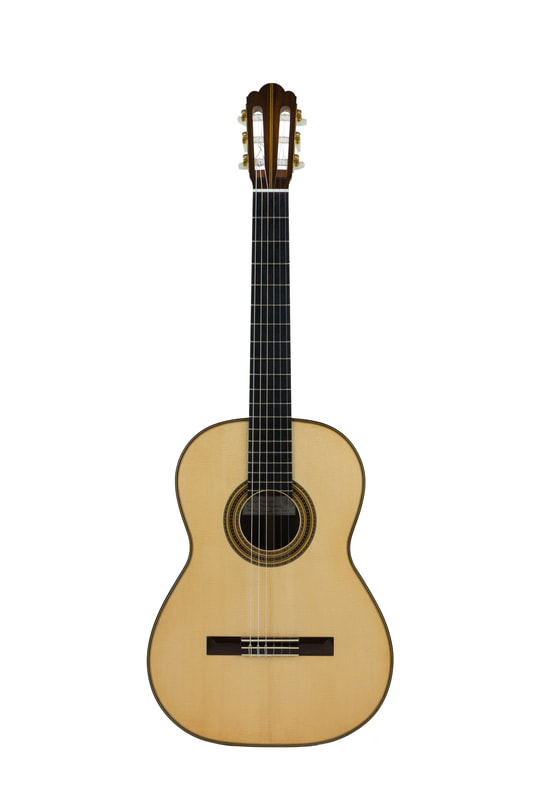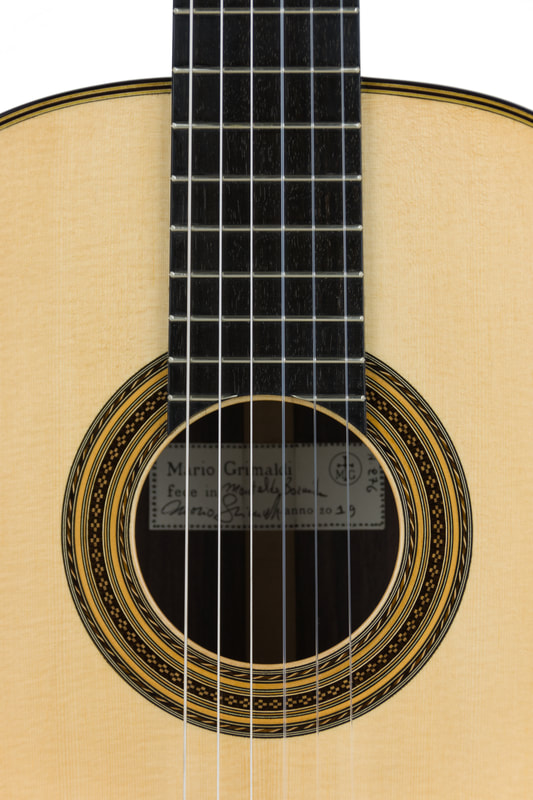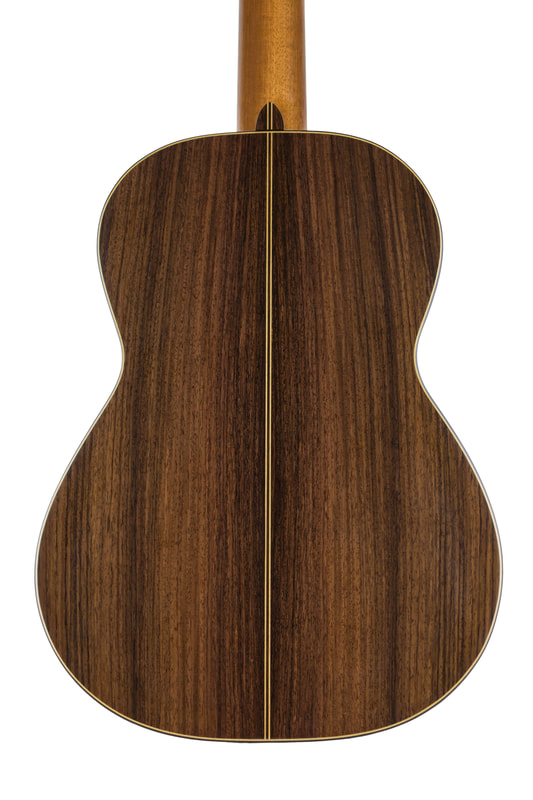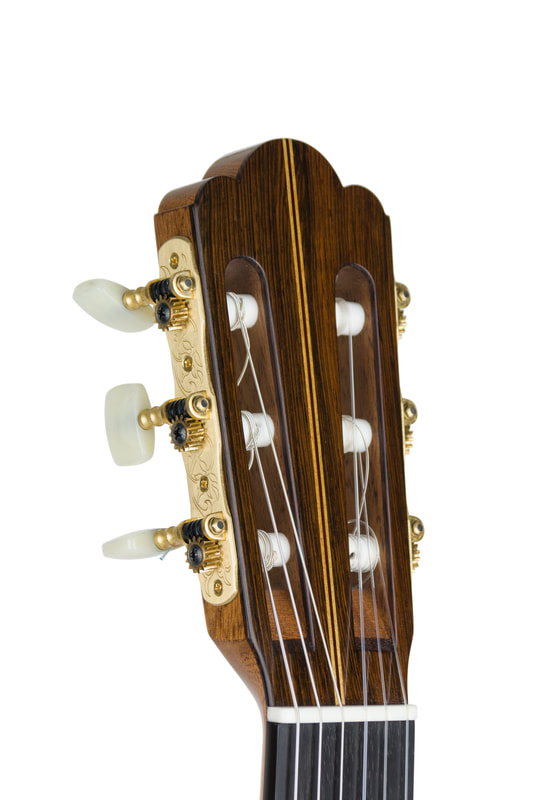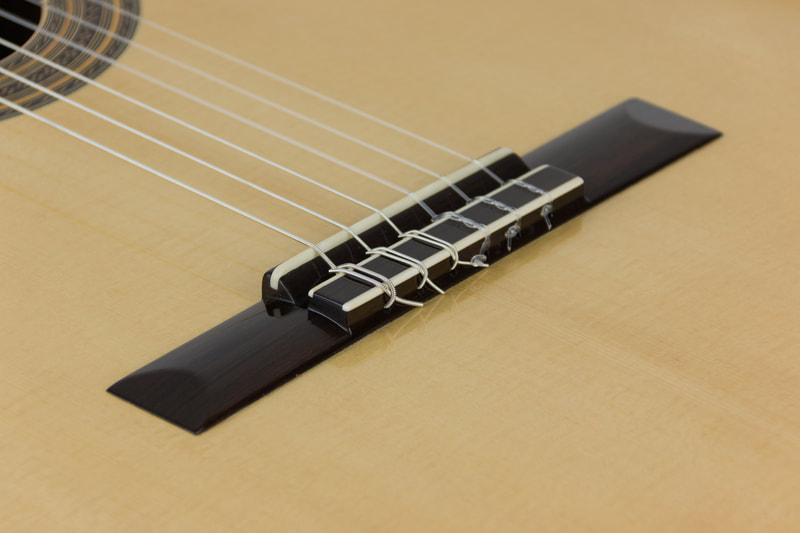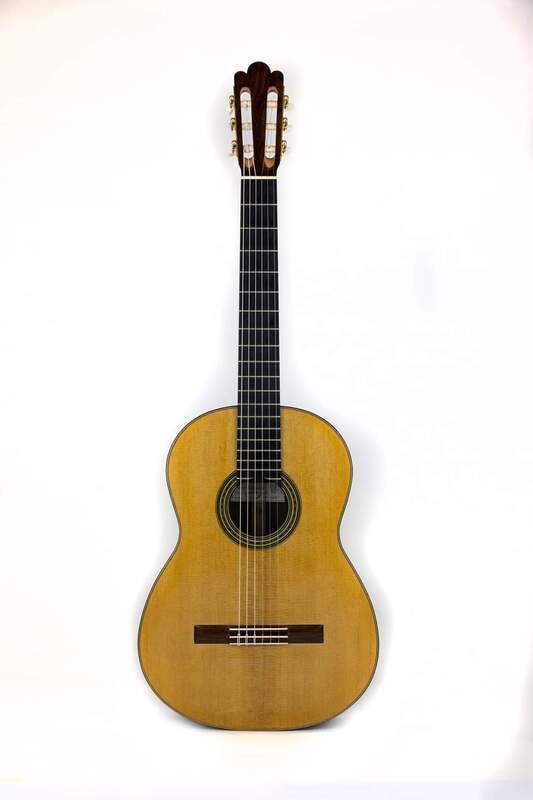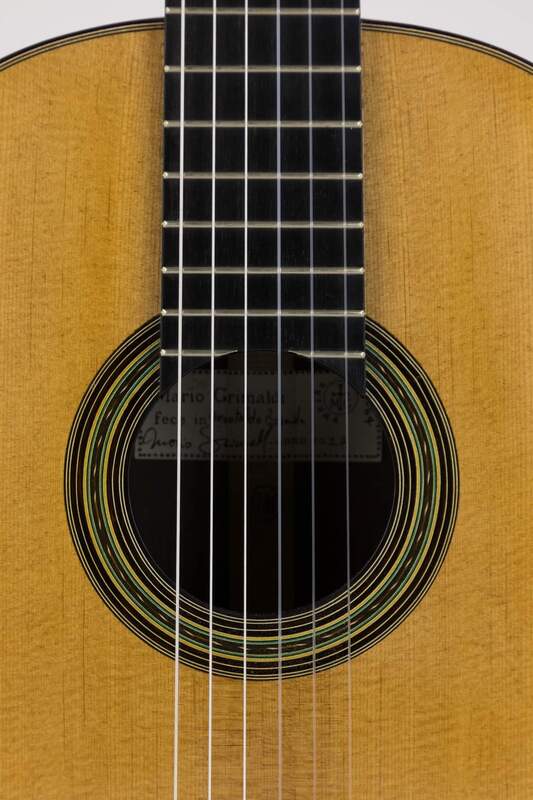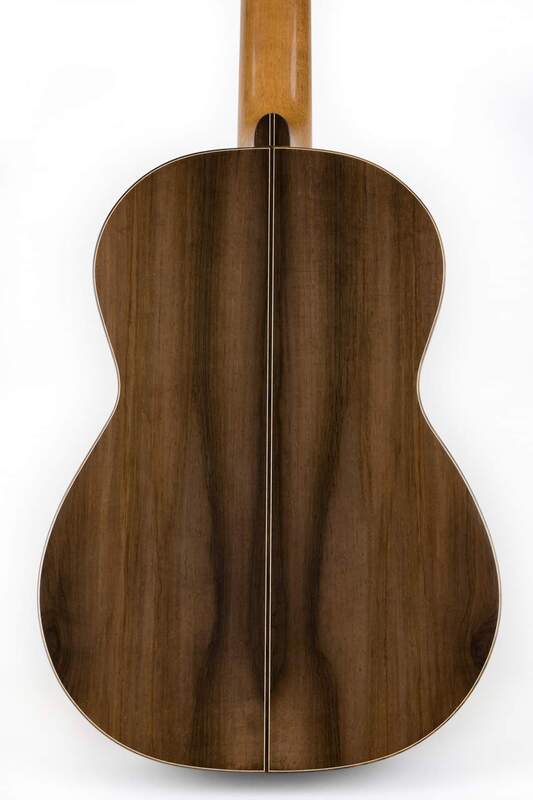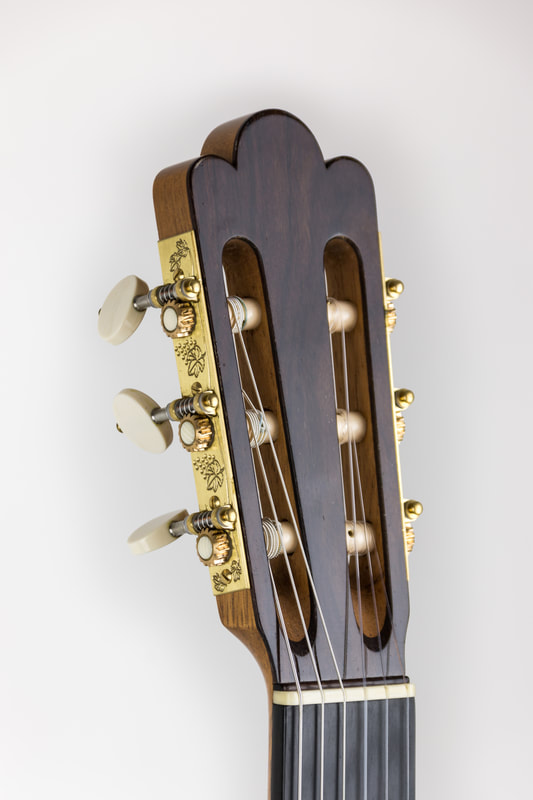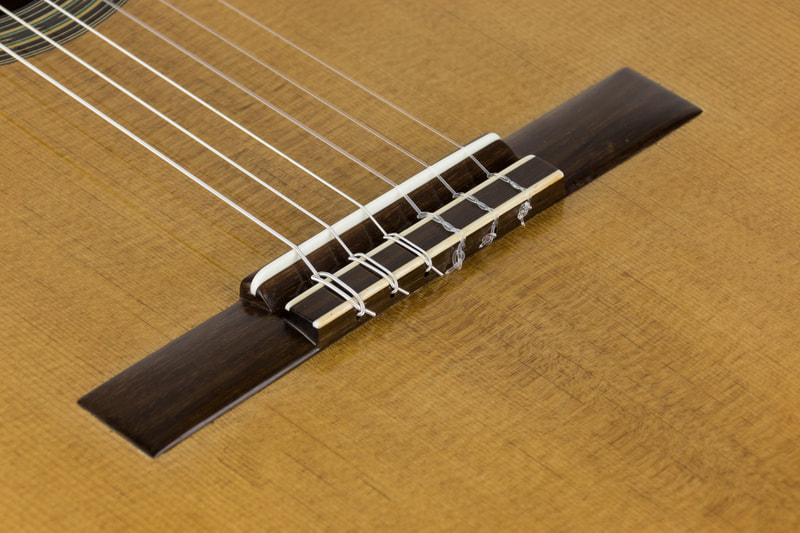Mario Grimaldi guitars
Luthier and organologist, Mario Grimaldi has been building classical concert guitars since 1986 entirely by hand in the wake of traditional luthiery, creating models inspired by the greatest luthiers in history: Hermann Hauser, Antonio De Torres, Manuel Ramirez, Enrique Garcia, Daniel Friederich, Santos Hernandez, Domingo Esteso.
Biography
Born in Filippa di Mesoraca (Crotone) in 1957, Mario Grimaldi started working wood at the age of sixteen as a mechanical model maker near Milan, where the model for the Ferrari Formula 1 car was made. In 1982 he enrolled in music school of Milan studying for several years classical guitar and double bass. In 1986 he attended a course of making plucked stringed instruments with Carlo Raspagni, and in 1989 he opened his own workshop dedicating himself exclusively to classical guitar making. The guitars of this period are inspired by those of Robert Bouchet. In 1996 he received a guitar commission from Maestro Alirio Diaz, with some constructive details requested by himself. Furthermore, the Venezuelan guitarist allowed him to make a detailed survey of his 1951 Hauser guitar and since then he built his Hauser model inspired by that guitar. In 2001 he met Pietro Gallinotti’s son, Carlo, who was his only assistant in the workshop. From Carlo he received the memorabilia of the workshop, shapes, woods, equipment. He then experienced the particular constructive method of Gallinotti, which described in a book dedicated to him, a method that influenced his way of guitars making to a certain extent. An important part of his activity is dedicated to instrument restoration, and for some years he has been working on the care and maintenance of an important private collection of historical guitars from the great Spanish and European makers, by whom he often get inspired to build his guitars. He lectured in several Italian Conservatories on the historical Italian luthiery of XX century. He published the books "Pietro Gallinotti liutaio di Solero" (Ed. Rosa Sonora, 2006) and "Il legno che canta " (Ed. Curci, 2013).
Website: www.mariogrimaldi.it
Born in Filippa di Mesoraca (Crotone) in 1957, Mario Grimaldi started working wood at the age of sixteen as a mechanical model maker near Milan, where the model for the Ferrari Formula 1 car was made. In 1982 he enrolled in music school of Milan studying for several years classical guitar and double bass. In 1986 he attended a course of making plucked stringed instruments with Carlo Raspagni, and in 1989 he opened his own workshop dedicating himself exclusively to classical guitar making. The guitars of this period are inspired by those of Robert Bouchet. In 1996 he received a guitar commission from Maestro Alirio Diaz, with some constructive details requested by himself. Furthermore, the Venezuelan guitarist allowed him to make a detailed survey of his 1951 Hauser guitar and since then he built his Hauser model inspired by that guitar. In 2001 he met Pietro Gallinotti’s son, Carlo, who was his only assistant in the workshop. From Carlo he received the memorabilia of the workshop, shapes, woods, equipment. He then experienced the particular constructive method of Gallinotti, which described in a book dedicated to him, a method that influenced his way of guitars making to a certain extent. An important part of his activity is dedicated to instrument restoration, and for some years he has been working on the care and maintenance of an important private collection of historical guitars from the great Spanish and European makers, by whom he often get inspired to build his guitars. He lectured in several Italian Conservatories on the historical Italian luthiery of XX century. He published the books "Pietro Gallinotti liutaio di Solero" (Ed. Rosa Sonora, 2006) and "Il legno che canta " (Ed. Curci, 2013).
Website: www.mariogrimaldi.it
How Mario Grimaldi works
His way of building guitars follows, broadly speaking, the technique adopted by the Spanish school, taking his inspiration from the guitars of the great makers of the past. He never builds identical copies, but he extrapolates from the originals the fundamental principles useful to create a beautiful sound.
Of course it is a personal interpretation of the original models, similar in some ways to what a musician does when he plays a composer's piece with his own taste. The models he takes as a reference are the ones he admired most both in terms of sound and aesthetic: Hauser, Torres, Manuel Ramirez, Santos Hernandez, Garcia, Gallinotti. His working method is based on 35 years of experience, having acquired a certain sensibility in his fingers as well as in his ears. With the pressure of the fingers he determines the degree of elasticity of the soundboard, which he believes is one the most important factor in order to obtain a good sound and a good balance, being the soundboard the real engine of the instrument. He mainly uses Italian spruce and, if he is asked to use it, he also uses the old cedar boards that he inherited from the Gallinotti family. For the construction of all the parts of his instruments he uses wood and animal glue to glue the soundboard. The paint to finish the instrument is an alcoholic base composed of shellac and other vegetable resins, then he spreads the paint with a pad using epoxy resins to greatly reduce production times. He is also experimenting with a particular spruce that grows in America, the Adirondak spruce, and also Sitka spruce. These boards are treated with a roasting process that ages them quickly. For the body and sides he uses the usual woods: Rio Rosewood (with Cites certificate) Indian Rosewood, Maple. For the neck he uses mahogany and, sometimes, cedar. The rosettes are made by him one at a time and sometimes he asks the customer to choose which design he wants and likes better.
His way of building guitars follows, broadly speaking, the technique adopted by the Spanish school, taking his inspiration from the guitars of the great makers of the past. He never builds identical copies, but he extrapolates from the originals the fundamental principles useful to create a beautiful sound.
Of course it is a personal interpretation of the original models, similar in some ways to what a musician does when he plays a composer's piece with his own taste. The models he takes as a reference are the ones he admired most both in terms of sound and aesthetic: Hauser, Torres, Manuel Ramirez, Santos Hernandez, Garcia, Gallinotti. His working method is based on 35 years of experience, having acquired a certain sensibility in his fingers as well as in his ears. With the pressure of the fingers he determines the degree of elasticity of the soundboard, which he believes is one the most important factor in order to obtain a good sound and a good balance, being the soundboard the real engine of the instrument. He mainly uses Italian spruce and, if he is asked to use it, he also uses the old cedar boards that he inherited from the Gallinotti family. For the construction of all the parts of his instruments he uses wood and animal glue to glue the soundboard. The paint to finish the instrument is an alcoholic base composed of shellac and other vegetable resins, then he spreads the paint with a pad using epoxy resins to greatly reduce production times. He is also experimenting with a particular spruce that grows in America, the Adirondak spruce, and also Sitka spruce. These boards are treated with a roasting process that ages them quickly. For the body and sides he uses the usual woods: Rio Rosewood (with Cites certificate) Indian Rosewood, Maple. For the neck he uses mahogany and, sometimes, cedar. The rosettes are made by him one at a time and sometimes he asks the customer to choose which design he wants and likes better.
Torres model (after Antonio de Torres SE111 year 1887) 'La Antiqua'
Top: Old Spruce (seasoned 80 years , approx)
Body and sides: Eyed Maple
Neck: Mahogany
Scale: 650 mm
Nut: 52 mm
Body and sides: Eyed Maple
Neck: Mahogany
Scale: 650 mm
Nut: 52 mm
|
|
|
|
|
|
Hauser model
Top: Spruce
Body and sides: Indian Rosewood
Neck: Mahogany
Scale: 650 mm
Nut: 52 mm
Body and sides: Indian Rosewood
Neck: Mahogany
Scale: 650 mm
Nut: 52 mm
Garcia model (after Enrique Garcia, year 1917)
Top: Torrefied Sitka Spruce
Body and sides: Brazilian Rosewood
Neck: Cedar
Scale: 645 mm
Nut: 52 mm
Body and sides: Brazilian Rosewood
Neck: Cedar
Scale: 645 mm
Nut: 52 mm
© 2021 by Giuseppe Chiaramonte. All rights reserved
